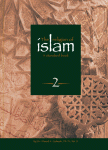The Religion Of Islam vol.2

Chapter XXVII - Rules For Distinguishing
False Traditions
The very words employed in transmitting suspected traditions as well as their style of composition were examined. The contents of each tradition were compared with the commands and injunctions contained in the Koran and with those religious doctrines and dogmas that had been deduced from the Koran, and with those traditions which had been proved to be genuine. The learned scholars investigated the nature of the import of each related hadîth as to whether it was unreasonable, improbable, or impossible.The modes of procedures were adopted by the learned scholars of hadîth as follows:
It will, therefore, be evident that the hadîth, considered as genuine by the Sunni Muslims, must indispensably possess the following characters: “The narrator must have plainly and distinctly mentioned that such and such a thing (a saying or an action) was either said or done by the Prophet, the chain of narrators from the last link up to the Prophet must be unbroken; the subject related must have come under the actual ken of its narrators; all the narrators, from the last up to the Prophet, must have been persons conspicuous for their piety, virtue and honesty; every narrator must have received more than one tradition from the narrator immediately preceding him; every one of them must be conspicuous for his learning so that he might be safely presumed to be competent both to understand correctly, and faithfully deliver to others, the sense of the tradition; the import of the tradition must not be contrary to the injunctions contained in the Koran, or to the religious doctrines deduced from that Holy Book, or to the traditions proved to be correct; and the nature of the import of the tradition must not be such as persons of good opinion might hesitate in accepting.
Any tradition thus proved genuine can be made the basis of any religious doctrine; but notwithstanding this, another objection may be raised against it, which is that the tradition is the statement of one person only, and therefore, cannot, properly, be believed in implicitly. For obviating this, three grades have been again formed of the hadîth proved as genuine. These three grades are the following: ãÊæÇÊÑ mutaeâtir; ãÔåæÑ mash-hûr’ and ÎÈÑ ÇáÃÍÏ khabarul-ahad.
Mutawâtir is an appellation given to those traditions only that have always been, from the time of the Prophet ever afterwards, recognized and accepted by every associate of the Prophet, and every learned individual, as authentic and genuine, and to which no one has raised any objection. All Muslim learned divines of every period have declared that traditions of the grade of mutawâtir are implicitly believed and ought to be religiously observed.
Mash-hûr is a title given to those traditions which, in every age, have been believed to be genuine by a number of learned scholars. These are the traditions which are found recorded in the best collections that treat of them, and having been generally accepted as genuine, from the nucleus of certain Muslim doctrines.
Khabarul-ahad (or hadîth related by one person) is an appellation given to traditions which do not possess most of the qualities belonging to the traditions of the first two grades; in which case they were considered as not authentic.
There is some difference of opinion as to who first attempted to collect the traditions, and to compile them in a book. Some scholars say “Abdul-Malik ibn Juraij of Mecca, who died in 150 A.H., whilst others assert that the collection, which is still extant by the Imâm (Divine doctor) Mâlik ibn Anas, who died in 179 A.H., was the first collection. The work of the latter is still held in very great esteem, although it is not generally included among the standard six Sahûh books, i.e. the “six correct” books received unanimously by sunni Muslims. In a previous passage of this work the names of these six books were given; once more they are the collection of:
- Al-Imâm Muhammad ibn Ismâ’il Al-Bukhâri, 256 A.H.
- Al-Imâm Muslim ibn Al-Hajjâj, 261 A.H.
- Al-Imâm Abû-Dâwûd Solimân, 275 A.H.
- Al-Imâm Muhammad ibn Isa Al-Tirmizi, 279 A.H.
- Al-Imâm Ibn Mâja, abû-‘Abdullâh Muhammad, 283 A.H.
- Al-Imâm An-Nasâ’i, Abû-‘Abdul-Rahmân, 303 A.H.
Besides these, the collections of Imâm (Divine Dr.) Al-Shâf’i (204 A.H.), Ibn Idris, Dr. Ahmed ibn Hanbal (241 A.H.), Dr. Imâm Mâlik ibn Anas (179 A.H.) are also considered authentic by sunni Muslims. ([1])
[1])) Vide “An Essay on Muhammadan Tradition”, by the honourable Syed Ahmad Khan of Bahasour. Cf. “Nukhbatul-Fagr”, by Sheikh Shahab-ed-Din Ahmad .
